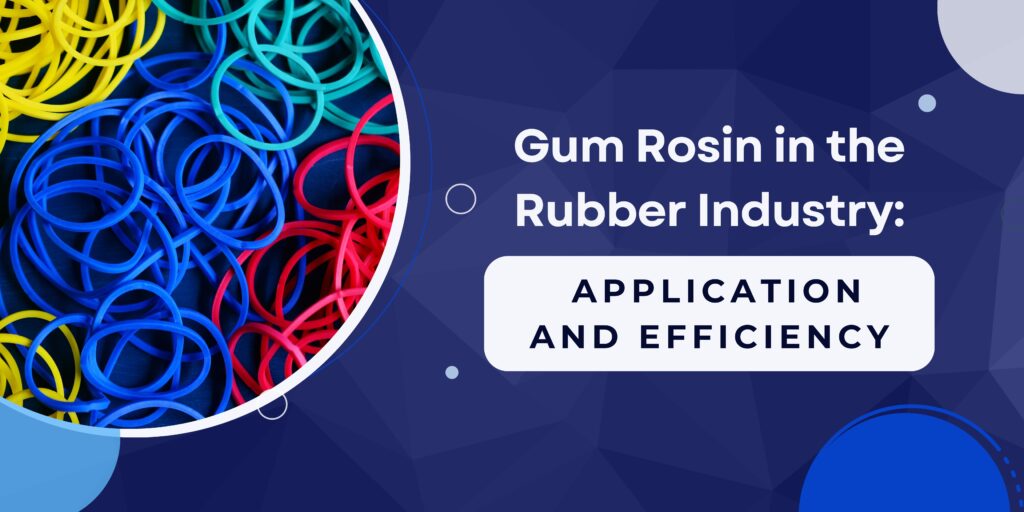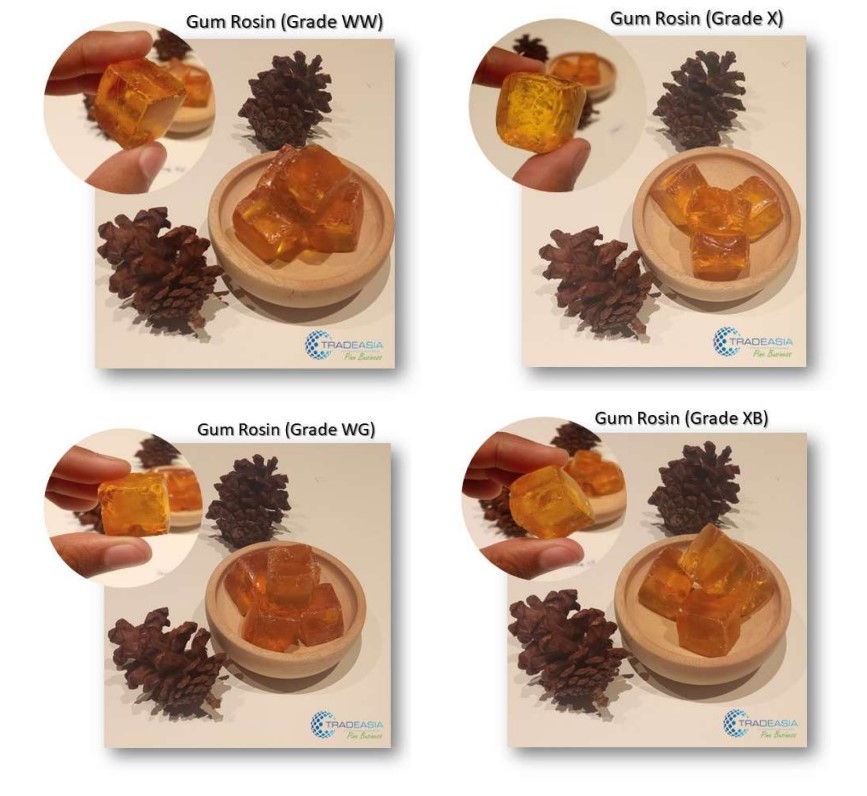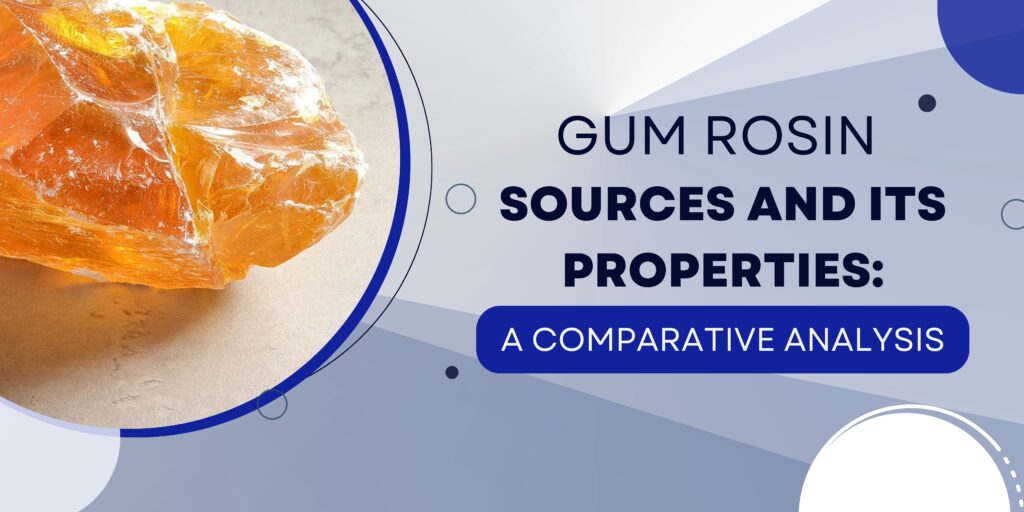
Gum rosin, a natural resin derived from pine trees, plays a crucial role in various industrial applications, and one of its noteworthy contributions is in the rubber industry. This article explores the diverse applications of gum rosin in rubber manufacturing and examines its performance-enhancing properties.
Understanding Gum Rosin
Gum rosin is obtained from the oleoresin of pine trees, primarily the genus Pinus. The extraction process involves tapping the trees to collect the resin, which is subsequently processed to yield gum rosin. This natural resin comprises a complex mixture of organic compounds, making it a versatile raw material for various industries.
Chemical Composition and Compatibility
Gum rosin’s chemical composition is characterized by a mixture of resin acids, which contribute to its adhesive and softening properties. The compatibility of gum rosin with rubber is attributed to its ability to form bonds with the polymer matrix, creating a synergistic effect that enhances the overall performance of rubber compounds. This compatibility is a critical factor in achieving optimal results in the final rubber product, ensuring a harmonious blend of materials.
Applications in the Rubber Industry
Tackifier in Rubber Compounds
Gum rosin serves as an effective tackifier in rubber compounds. Tackifiers are substances that enhance the tackiness or stickiness of rubber, improving the bonding of different components in the manufacturing process.
Adhesion Promoter
The adhesion between rubber and other materials is crucial in many applications, such as tire manufacturing. Gum rosin acts as an adhesion promoter, facilitating a strong bond between rubber and reinforcement materials like fabric or steel.
Softening Agent
In certain rubber formulations, gum rosin acts as a softening agent. It imparts flexibility to the rubber compound, making it more pliable and enhancing its processability during manufacturing.
Improving Resilience
Gum rosin contributes to the resilience and elasticity of rubber products. This is particularly important in applications where the rubber needs to withstand repeated stress, such as in the production of conveyor belts and automotive components.
Anti-Oxidant Properties
The natural anti-oxidant properties of gum rosin can help protect rubber materials from oxidative degradation, extending the lifespan of rubber products and ensuring better performance in various environments.
Performance Benefits
Enhanced Processing
The incorporation of gum rosin in rubber formulations improves the processability of rubber compounds, leading to more efficient manufacturing processes.
Improved Adhesion
Gum rosin enhances the adhesion between rubber and different substrates, ensuring the integrity and longevity of the final rubber product.
Tailored Formulations
Rubber manufacturers can customize formulations by adjusting the concentration of gum rosin to achieve specific performance characteristics, allowing for a wide range of applications.
Environmental Considerations
As a natural and renewable resource, gum rosin provides an environmentally friendly alternative to synthetic additives, aligning with the growing demand for sustainable and eco-friendly practices in the rubber industry.
Process Optimization and Efficiency
Rubber manufacturers often face challenges related to processing efficiency and energy consumption. Gum rosin aids in optimizing these processes by reducing the viscosity of rubber compounds, facilitating easier mixing and extrusion. This improvement in processing efficiency not only enhances manufacturing productivity but also contributes to cost-effectiveness in the production of rubber goods.
Research and Development Initiatives
Ongoing research and development initiatives focus on harnessing the full potential of gum rosin in rubber applications. Scientists and engineers are exploring novel formulations and processing techniques to maximize the benefits of gum rosin, with an emphasis on creating sustainable and high-performance rubber products. This commitment to innovation underscores the adaptability of gum rosin in meeting evolving industry demands.Global Market Trends
The global rubber industry’s reliance on gum rosin has seen fluctuations based on market trends, economic factors, and environmental considerations. Understanding these trends is crucial for rubber manufacturers and suppliers of gum rosin. Factors such as emerging economies, technological advancements, and consumer preferences for sustainable products shape the landscape of the gum rosin market within the rubber industry.
Challenges and Future Prospects
While gum rosin offers numerous advantages, challenges persist, including the need for consistent quality, sustainable sourcing practices, and potential competition from synthetic alternatives. Addressing these challenges requires collaboration between stakeholders in the gum rosin and rubber industries. Looking ahead, the integration of advanced technologies and sustainable practices will likely drive the future prospects of gum rosin in the rubber industry.
Environmental Sustainability
The natural origin of gum rosin positions it favorably in the context of environmental sustainability. Rubber products incorporating gum rosin can align with green manufacturing practices, meeting the growing consumer demand for eco-friendly solutions. This aspect is particularly relevant as industries strive to reduce their environmental footprint and adopt greener alternatives throughout the supply chain.
Conclusion
In summary, gum rosin’s role in the rubber industry extends beyond its immediate applications. Its compatibility with rubber, contributions to process optimization, and alignment with environmental sustainability make it a key player in shaping the industry’s future. As research continues to unlock new possibilities and the global market adapts to changing dynamics, gum rosin stands as a versatile and valuable resource in the formulation of high-performance, sustainable rubber products. The ongoing collaboration between researchers, manufacturers, and environmental advocates ensures that the journey of gum rosin in the rubber industry continues to evolve, offering innovative solutions and contributing to a more sustainable industrial landscape.




